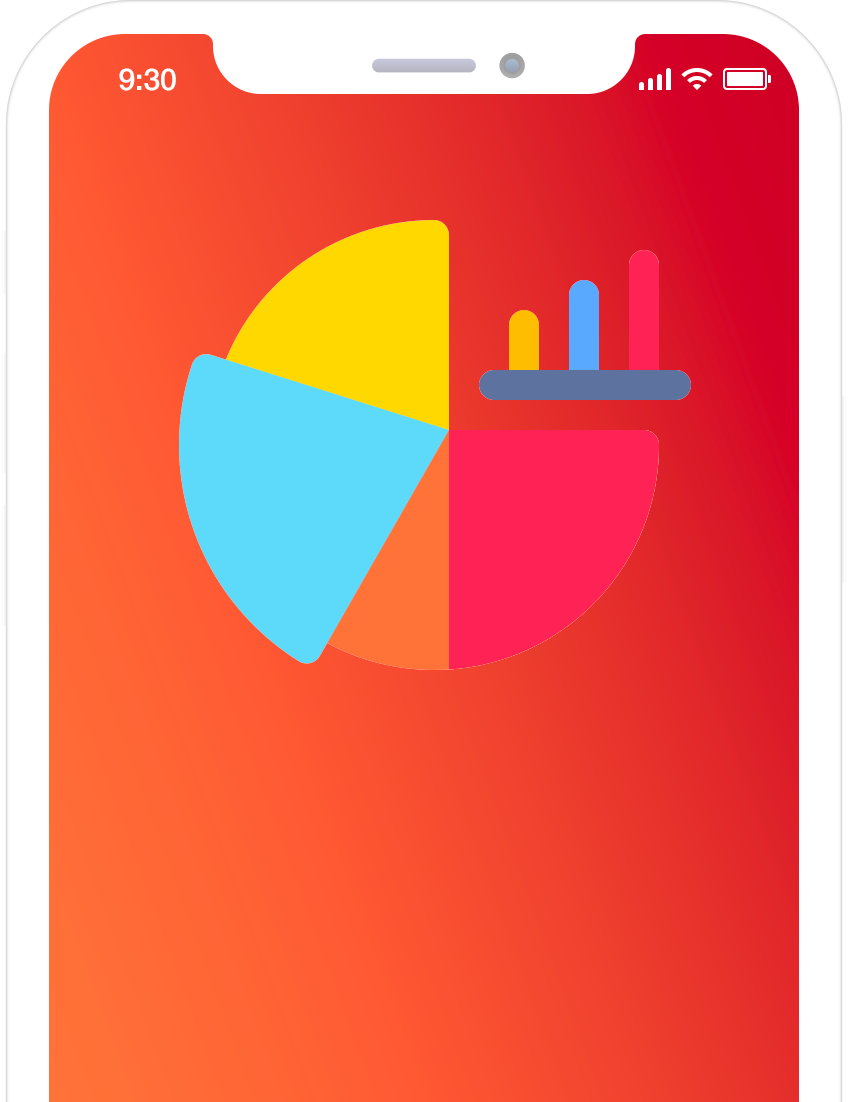Top 31 Shopify statistics about Shopify and Shopify Plus that we think you should know about.
When choosing an ecommerce platform it's important to understand how it works, the features you'll get access to and also who else uses it. It can be a really challenging to find accurate and concise data amongst a sea of opinions about all of the different ecommerce platforms available. We've prepared our Top 31 statistics to help you have the Shopify Statistics, facts and figures at your fingertips.
Since Shopify's launch in 2006, Shopify Statistics has gone from strength to strength initially launching for startups and small businesses to sell online quickly and simply with limited budget. The platform has since exploded globally and large businesses now rely on the platform to power their eceommerce strategies. Shopify is unique in the fact that it offers the technical architecture needed to launch and scale with ease including reliable hosting and maximum security - this allows brands to focus on the frontend and business process rather than worry about server management etc. Shopify has also become so successful due to it's uptake from partners around the world both developing amazing apps to extend the features of stores and also agency partners to support merchants to suceed on the platform and provide merchant solutions.
This article includes our round of up of Shopify statistics that we think you should know about, including facts and figures about Shopify's business growth, the experience and results brands see using the platform and also more about some of the features included within the platform. So without further ado, let us dive into Shopify Statistics and stats that we have hand-picked as being the most interesting.
1. Shopify's revenue in 2022 was $5.245B, a 24.59% increase year-over-year.
Founded in Canada, Shopify revenue for the twelve months ending September 30, 2022 was $5.245B, a 24.59% increase year-over-year. Shopify annual revenue for 2021 was $4.612B, a 57.43% increase from 2020 which shows continued growth across the world-leading ecommerce platform. The platform has shown growing success since it's launch and continues to receive year-on-year revenue growth.
(Macrotrends - Shopify Statistics
2. Shopify merchants generate $319 billion in global economic impact.
In March 2020, Shopify sellers generated more than $319 billion in global economic impact. Together, Shopify merchants would make up the 7th largest company in the world in terms of revenue, above Apple, BP, and Volkswagen. Shopify has enabled brands to sell in ways that historically have not been as easily available which has allowed it's merchants to make a huge impact.
(Shopify - Shopify Statistics)
3. More than 13,000 merchants use Shopify Plus.
In 2023, there are more than 13,000 live Shopify Plus stores that leverage the benefits that Shopify's enterprise level platform offers with almost 1,000 of those being based in the UK. Gross merchandise volume / gross profit grows higher typically with Plus brands including brands such as whole foods market. During the pandemic Shopify saw huge growth with shoppers spending more online and more brands required an enterprise solution with Shopify Plus. Shopify Plus is the ultimate enterprise solution for scaling brands - let us know if you are interested in upgrading.
(BuiltWith) - Shopify Statistics
4. More than half of Shopify's ecommerce traffic is from mobile devices..
In 2023, there are more than 13,000 live Shopify Plus stores that leverage the benefits that Shopify's enterprise level platform offers with almost 1,000 of those being based in the UK. The use of desktops over mobiles is changing and buying habits are too, with the rise of social media networks fuelling traffic from mobile devices it's no wonder than more customers are buying from handheld devices.
(Shopify) - Top Shopify Statistics

5. Over 75K stores sell clothing on Shopify.
Most online shops created through the e-commerce platform Shopify sold clothing products and category collections. As of April 2021, almost 75.5 thousand Shopify stores operated in the clothing segment. Home and garden had the second largest offer, at 33.8 thousand shops. Only 6.2 thousand stores dropshipped car and truck parts via the Shopify package. We do however see changing trends over the top sold products on Shopify based on consumer habits at the time.
(Statista)
5. Shopify has over 4.4 million active daily users.
Although it does vary on a day by day basis, Shopify can expect around 4.4 million daily active users. This number can go up or down depending on the day. This is likely to continue to grow. Shopify's stable hosting architecture keeps it's platform accessible around the clock. Previously, statistics indicated that there were over 2.1 million daily active users in Shopify. Actually, the number has changed to 4.4 million. For more details and insights, feel free to check out an
updated statistics page.
Superlinks
6. Top product categories sold include T-Shirts, Apparel, Vitamins, Books, Mobile Phones & Shoes.
It appears that most Shopify customers like nothing more than a good T-shirt or a top. Other popular best-selling goods on the shopping platform include vitamins, books, mobile phone cases, and shoes, according to Shopify product stats. Things you can sell on Shopify are limitless, if you can find sources of anything to sell you can likely sell it and make money.
(TrueList)
7. Shopify's Q1 revenue in 2023 was 1.2 billion.
Total revenue in the first quarter grew 22% from January 2023 to $1.2 billion, which represents a two-year compound annual growth rate of 60%. The first quarter of 2021 marked the highest revenue growth in the company's history as a public company driven by stimulus and COVID-19 lockdowns. Shopify merchants are emerging from the last two years stronger and better prepared for commerce everywhere. Shopify announces quarters performance on it's news site.
(Shopify)
8. Shopify’s growth rate almost three times rate of global ecommerce growth.
Shopify’s growth rate in 2018 was 59%, nearly three times the global ecommerce growth rate. This shows the power of the platform and how Shopify's technology is truly an industry leader. This can be an indication that the business is performing exceptionally well and is on the path to continue to outpace the growth of the global ecommerce industry as a whole.
(Fundera)
9. 87% of Shopify merchants use a Shopify app.
Amongst a large library of Shopify apps on the Shopify app store, merchants can easily extend the features of their store with ease. Shopify partners reports over 80% of merchants use an app within their Shopify storefront. The amount and variety of apps within Shopify grows every month thanks to innovative app developers that look for ways to create new and inspiring experiences for ecommerce websites. There is a large partner community of developers building amazing apps to allow anyone to improve and deliver the best shopping experience.
(Shopify Partners)
10. Almost 649 million buyers purchased through a Shopify store.
Nearly 649 million people made a purchase from a Shopify store in 2022 alone. It is predicted that Shopify merchants will have over 700 million customers in 2023 as more merchants grow within the platform and also as existing Shopify powered brands see record growth. The majority of online store shoppers are also becoming familiar with the experience of Shopify's recognisable checkout process.
(Demand Sage)
11. Shopify Plus grow by an average of 126% year-on-year.
Shopify Plus is the enterprise version by Shopify that offers extra features and support tailored for fast growing, high revenue brands. You can learn more about Shopify Plus on our dedicated
"benefits of Shopify Plus" article. There is a higher fee but it does come jam packed with great features. Brands are using shopify as their central admin as it connects to other platforms such as ebay and youtube.
(Web Tribunal)
12. Average conversion rate for Shopify was 1.4%.
Littledata surveyed and asked questions to 3,223 Shopify stores in September 2022 and found the average conversion rate for Shopify was 1.4%. Bare in mind that conversion rates vary hugely between industries. You can use Shopify's
conversion rate calculator to see more averages.
(LittleData)
13. Shopify powers almost 4.5 million stores globally.
BuilWith reports in 2023 that there are almost 4.5 million Shopify stores across 175 countries. The countries with the most stores include United States, United Kingdom, Canada, Australia, Brazil, Germany, France, India, Italy and the Netherlands.
(BuiltWith) - Charle's Shopify Statistics
14. Shopify hit a $7.5billion record in 2023 black friday and cyber monday.
Shopify store owners saw Black Friday and Cyber Monday (BFCM) ecommerce sales activity soar to 7.5 billion dollars, the highest on record. High street and in-person shopping grew 24 percent with POS sales made by Shopify UK merchants, but it was mobile shopping that saw 75 percent of transactions versus 25 percent on desktop. 10% of merchants leverage Shopify's POS features. Shopify generated more than $2.9 billion in sales on Black Friday and Cyber Monday in 2019.
(Fashion United) - Shopify Statistics
15. Over 25.5 million consumers purchased something on Shopify during Black Friday and Cyber Monday in 2019.
Every year the total sales through a Shopify store typically grows and 2019 BFCM saw more than 25 and half million consumers buying from a Shopify powered ecommerce store.
(Fundera)
16. Annual Shopify Plus sales revenues range between $1 million to $500 million.
Some of the biggest Shopify stores report having annual revenue of anywhere between $1 million and $500 million. This goes for some of the more serious businesses that decided to invest an extra buck into Shopify Plus.
(Aquire Convert) - Shopify Statistics
17. Email marketing has the highest conversion rates on Shopify Stores.
Shopify conversion rates are highest among email users (4.29%), with product search (3.04%) coming in second, followed by direct search (2.93%), then social media (1.81%). The leading providing of email marketing for Shopify is Klaviyo, vastly growing father than competitor Mailchimp.
(Market Splash) - Statistics
18. Shopify retailers make around $72 per customer.
An average Shopify store in the United States makes around $72 from one customer. We've seen merchants focusing on retention strategies to keep their customers coming back and spending again to minimise aqustition costs.
(Folio3) - Statistics
19. Around 2/3 of Shopify stores are based in the USA.
Around about 2/3 of the online shops using Shopify have been created by merchants based in the USA. In fact, about two-thirds of Shopify stores are based there. In February 2023 the USA had almost 3 million stores. The UK follows with around 200 thousand Shopify stores and Australia in third place with 135 thousand stores.
(Folio3) (BuiltWith) - Statistics
20. Total Shopify Stores Increased by 55%.
In the fourth quarter of 2021, the total Shopify Stores Increased by 55% Year-Over-Year and Shopify continues to grow taking more and more market share of ecommerce stores globally. Shopify continues to use everything it can and keep using resources to invest into the platform with new features and growth.
(Shopify) - Statistics
21. Shopify Holds 20% of the Market Share in the UK.
Shopify Holds 20% of the Market Share in the UK With WooCommerce in the Lead with around 100K more ecommerce stores powered by Wordpress & Woocommerce than Shopify, however it has been argued Shopify is used by high revenue brands. Other platforms include Magento and Salesforce. - Statistics
(PageFly) - Statistics
22. Shopify is the Biggest Name in the U.S. eCommerce Software Market.
As of September 2021, Shopify was the biggest name in the U.S. e-commerce software market, used by roughly 29 percent of websites that use e-commerce technologies. The market’s other major competitors include Wix Stores, WooCommerce Checkout, and Squarespace Add to Cart, each of which boasts a market share of at least 11 percent.
(Statista) - Statistics
23. There are over 180 thousand live Shopify stores in the UK.
According to technology tracking tool BuiltWith, in 2023 there were over 180 thousand ecommerce stores live in the United Kingdom that use Shopify to power their store this has been fast growing over recent years.
(BuiltWith) - Statistics
24. 57.6% of UK-Based Shopify Stores Use Instagram.
57.6% of UK-based Shopify stores use Instagram ads, post content and more to grow their stores. Facebook comes second at 51.5% and Twitter ranks third at 22.3%.
(AppMySite) - Statistics
25. There are more than 4.4 million live Shopify stores globally.
Across the globe Shopify powers over 4.4 million ecommerce stores and growth continues year-on-year. Some of these stores are over 15 years old, which goes to show how brands have enjoyed and stuck around for the platform.
(BuiltWith) - Statistics
25. 457 Million People Bought from a Shopify Store in 2020.
According to Shopify, over 457 million people bougth from an ecommerce store powered by Shopify or Shopify Plus in the year of 2020.
(Shopify) - Statistics
26. Businesses Built on Shopify Experienced a 50% Increase in Sales in 2019.
Businesses built on Shopify experienced a 50 percent increase in online sales in 2019, in comparison to the 21 percent increase experienced by the global e-commerce market. Shopify is a Canadian e-commerce company that offers e-commerce software platform to online stores. The platforms usage statistics is also easy for brands to keep their stores up to date.
(Statista) - Statistics
27. Over 50% of Shopify Stores See Repeat Purchases.
More than 50% of Shopify stores and ecommerce companies see repeat business, with the average shopper buying 3.8 times from the same online shop. Stores using Shopify seemingly offer an excellent customer experience that sees shoppers and visitors returning for more products and services.
(Deko Pay) - Statistics
28. An average order value of £60.
While UK-based AOV numbers on Shopify are hard to come by, shopping in the US reveals some encouraging statistics about how much people are spending on average. According to a survey of more than 1,900 shoppers, the average spend for ecommerce orders is $81, around £60 in sterling. It's an impactful number higher than the industry benchmark, which is $78 (58).
(Deko Pay) - Statistics
29. Shopify offers 118 themes to choose from.
Shopify allows merchants to choose a frontend theme to control how the store looks, you can choose from 11 free themes or 107 paid themes depending on your creative requirements and personal tastes. Merchants can also source an agency like us to build an entirely
custom Shopify theme.
(Shopify Theme Library) - Statistics
30. Shopify supports 20 languages.
Customers all over the world enjoy viewing content in their native country language. Considering region for customers can really help selling to them. Whether you are shopping from the UK, Europe, Germany, or China, Latin America, New Zealand Shopify stores can show the correct language. Translating stores content can lead to more sales because international customers can better understand marketing, product details, shipping, and return policies. Shopify supports 20 languages. The ecommerce market is one that requires stores to show a customised and personal online experience and language is a great way to do that.
(Shopify Support - Statistics)
31. Shopify has over 10,000 employees.
Shopify total number of employees in 2021 was 10,000, a 42.86% increase from 2020. Shopify staff work remotely all over the world. Shopify market share and Shopify sales can be thanked to Shofy's employees who manage the Shopify platform day in day out every year.
(Macrotrends) - Statistics
Conclusion
That was our Top 31 Top Shopify Statisticsl, facts and figures. Shopify is a powerful ecommerce platform that has revolutionised the way businesses sell their products online. With a wide range of features and integrations, Shopify has become a popular choice for businesses of all sizes looking to establish an online presence. Some of the most successful ecommerce industries on the Shopify platform have been clothes, fitness, food & drink, technology and home products. From New York to London, brands all over the internet use Shopify's technology to make the most out of their online store's sales performance. As a Shopify Agency, we've seen first hand how the platform has helped businesses reach strategic goals, especially after migrating from other platforms such as
Magento,
Woocommerce, or
Salesforce Commerce Cloud. One of the key features of Shopify is its point of sale (POS) system, which allows businesses to seamlessly integrate their online and offline sales channels. This means that businesses can easily sell their products in physical stores and online, all from the same platform using the pos system. Several successful businesses have utilised Shopify to grow their brands, including Gymshark, Tesla Kylie Cosmetics, gmv, and Staples.
In addition to its ecommerce features, Shopify also offers a variety of tools for businesses to manage their online presence. The Shopify blog provides helpful tips and resources for businesses looking to improve their online marketing, while the Shopify inbox makes it easy to manage customer inquiries and support requests. There are many reasons why businesses choose Shopify over other ecommerce platforms like BigCommerce. The platform is easy to use, offers a wide range of integrations, and provides excellent customer support. With its headquarters in Ottawa, Canada, and offices in Los Angeles and California from is expansion over the years from 2006, Shopify has a global reach and continues to surprise with new and innovative features. Looking at the Shopify users chart and table of contents, the company looks future-proofed for years to come. Shopify now positions itself with an image image of all shapes and sizes of businesses.
Shopify's incredible suite of tools, gives merchants everything that they need to launch an ecommerce store with ease. Features from a range of amazing visual themes, features from the very best apps and a back-end dashboard / Shopify analytics and insights dashboard to allow you manage your business with ease builds the foundation of what Shopify has to offer. Shopify allows brands to scale affordable and easily with all of it's architecture coming out of the box and brands can focus on growing their business and leave the technical set up to Shopify. Brands of all sizes are choosing Shopify to power their businesses due to the relatively lower cost to market when compared to other enterprise level solutions within the growing ecommerce markets.
In 2023, Shopify's strategic focus is on the enterprise market to double down on larger scale brands and dissociate it's link with only being good for start up or smaller businesses. Shopify's investment into it's developmental capabilities mean that the flexibility of the platform is continuing to expand and allow
Shopify developers to deliver the most custom and tailored Shopify experiences for both brands and customers. Online traffic is likely to continue to grow as platforms push advertising and these Shopify statitics prove that companies from countries around the globe are likely to continue their investment activity into ecommerce sales in a bid to grow revenues and mrr. This list of Shopify stats show just how the platform has grown from its sites and stores that actively innovate and provide users with the best ecommerce experience possible. Whilst the COVID-19 pandemic is over and ecommerce growth is not as dramatic as anticipated, growth is still very much present and consumer behaviours are changing as is the economy to prevent loss. Shopify statistics also show that it has a significant share of the industry, with over one million active users and a total usage of mobile devices. The ability to manage orders and activity on-the-go has contributed to the success of the platform, also taking into account affiliates / the affiliate program, and partnerships of brands such as Pepsi, and Redbull creating demand for Shopify in general. Its no surprise why the
biggest brands on Shopify have had their success. Shopify also boats competitive
pricing.
FAQs
Who uses Shopify?
Shopify is a widely popular e-commerce platform that caters to a diverse range of users. From small businesses and entrepreneurs to established brands and even celebrities, Shopify attracts a broad spectrum of users. Its user base includes individuals who are looking to start their own online stores, as well as larger enterprises seeking a reliable and scalable e-commerce solution. Additionally, Shopify's user-friendly interface and extensive customization options make it accessible to users with varying levels of technical expertise. With millions of active users worldwide, Shopify has become the go-to platform for anyone looking to establish a successful online presence.
Who are Shopify's main competitors?
Shopify, being one of the leading e-commerce platforms, faces competition from several key players in the industry. Some of its main competitors include WooCommerce, a popular WordPress plugin that offers customizable online stores; BigCommerce, another robust e-commerce platform known for its scalability and extensive feature set; and Magento, an open-source platform that caters to larger enterprises with complex needs. Additionally, Shopify also competes with Squarespace, a website builder that provides e-commerce functionality, and Wix, a versatile platform offering both website building and e-commerce capabilities. While these competitors have their own unique strengths and target different segments of the market, Shopify continues to dominate with its user-friendly interface, extensive app ecosystem, and seamless integration options.
Who created Shopify?
Shopify, the popular e-commerce platform, was created by a team of innovative entrepreneurs led by Tobias Lütke in 2006. Lütke, a visionary software engineer and entrepreneur, recognized the need for a user-friendly and scalable solution for online businesses. With his expertise in web development and passion for empowering entrepreneurs, he assembled a team of talented individuals who shared his vision. Together, they designed and developed Shopify, which quickly gained traction and revolutionized the e-commerce industry. Today, Shopify stands as a testament to Lütke's ingenuity and entrepreneurial spirit.
Who owns Shopify?
Shopify is a publicly traded company, so it is owned by its shareholders. However, the largest shareholder and co-founder of Shopify is Tobias Lütke. He has been an integral part of the company since its inception and continues to play a significant role in its growth and success. Additionally, Shopify has attracted investments from various institutional investors and venture capital firms over the years, further diversifying its ownership structure.
So there you have our Top 31 hand-selected Shopify facts & figures and Shopify statistics we thought you should know about! It's incredible to see the amazing and fast growth of the platform and the remarkable results that brands see using Shopify as their ecommerce provider. In summary, the platform has seen incredible business growth and a remarkable success rate since it's launch, it's merchants see higher than average growth when compared to other ecommerce platforms and the community of providers for Shopify is huge giving merchants the ultimate set up for a success ecommerce future. Shopify has surpassed global growth trends amongst ecommerce and continue to grow ahead of it's competition. Shopify is recommended by many world leading advisors such as Deloitte, Forbes, Oberlo, and Motley Fool.
Shopify has made friends and partnerships with other leading platforms to create a network of integrations to make selling online easy. Shopify's features is rich with options and rarely is beaten by competitor e-commerce platforms. Shopify offers a number of different plans based on your business size and need. Shopify is great value for your hard earned cash and you can drip shopify payments with monthly options. If you're a Shopify dropshipping brand, brick and motor store, or online enterprise, the Shopify platform and Shopify dashboard have everything merchants need to supercharge sales. From analytics and advanced inventory stock management. We feel others ability to compete is incredibly challenging with Shopify's vast success. Shopify comes equipped with tools for marketers and business owners too. The information and research from these Shopify statistics really goes to show the evidence of the platform's success. We hope you enjoyed these Shopify stats as much as we did and we look forward to seeing Shopify's continued growth! Are you ready to take your business to a $1 million, $100 million or $5.1 billion dollar brand? Start today, and remember if you're ever looking for a Shopify Agency, Charle is on-hand with an in-house team of web designers and developers. Shopify's IPO lead to continued growth in the platform. Their founder has achieved market capitalization, across the world including, UK, USA, mexico, north America, and forecasts continued growth with outstanding product reviews. You too could soon be part of the next powerful Shopify statistics article!
Read Top Shopify Statistics 2023
Read Top Ecommerce Statistics 2023
Read Top TikTok Statistics 2023
Read Top Twitter / X Statistics 2023
Read Top Snapchat Statistics 2023
Read Top Influencer Marketing Statistics 2023


 Nic Dunn |
CEO - Charle Agency
Nic Dunn |
CEO - Charle Agency












